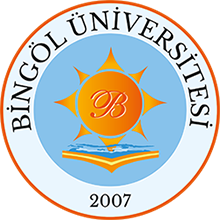Farklı Azot ve Fosfor Gübrelemesinin Elazığ İli Karakoçan İlçesi Savucak Köyü Merasının Ot Verimi ve Kalitesi Üzerine Etkisi
Özet
ÖZET:
Bu araştırma, Elazığ ili Karakoçan ilçesi Savucak köy merasında farklı dozlarda azot ve fosforlu gübrelemenin verim ve kalite üzerine etkisini belirlemek amacıyla 2021-2022 yıllarında iki yıl süre ile yürütülmüştür. Araştırma tesadüf blokları deneme deseninde faktöriyel düzene göre üç tekrarlamalı olarak yürütülmüştür. Denemede iki yıl için azotun 5 dozu (N₀=0, N₅=5, N₁₀=10, N₁₅=15, N₂₀=20 kg N/da) ve fosforun 5 dozu (P₀=0, P₄=4, P₈=8, P₁₂=12, P₁₆=16 kg P₂O₅/da) kombine edilerek toplam 25 farklı kombinasyon ve gübre kaynağı olarak azot için Üre (%46 Azot), fosfor için ise TSP (%44 triple süper fosfat) kullanılmıştır.
Araştırmanın sonuçlarına göre, azot ve fosforlu gübre dozu arttıkça meranın yeşil ot verimi 53,4 kg/da’dan 103,8 kg/da‘a yükselmiştir. Azot ve fosfor dozlarının uygulandığı merada kuru otta saptanan buğdaygil oranı %95,7-62,4 , baklagil oranı %1,7-19,8, diğer familya bitkileri oranı ise %2,2-20,6 arasında değiştiği belirlenmiştir. Meranın otunun en yüksek ham protein oranı (%22,4) 15 kg/da azot ve 4 kg/da fosfor uygulanan parselden elde edilmiştir. Ham protein verimi 8,8 kg/da’dan 20,4 kg/da’a yükselterek yaklaşık 2,5 kat artış göstermiştir. ADF ve NDF oranları fosfor dozuna bağlı olarak artış göstermiştir. SKM (%61,7-%66,6) oranları gübre uygulamasına bağlı olarak değişkenlik göstermiştir. KMT (%2,2-%2,9) ve NYD (%107,7-%145,1) azotlu gübre dozuna bağlı olarak sürekli artış göstermiştir. Mera otunun Ca, Mg, K ve P oranları sırasıyla %0,97-1,39, %0,24-0,35- %2,18-3,19 ve %0,30-0,41 olarak elde eldilmiş ve uygulanan gübre dozlarına bağlı değişkenlik gösterdiği belirlenmiştir.
Uygulanan azot ve fosfor dozlarının artışının yeşil ot, kuru ot, ham protein, SKM oranı, kuru madde tüketim oranı, NYD, Ca, Mg, K ve P verimlerini arttırdığı saptanmıştır. Ayrıca, azot dozlarının ADF ve NDF oranları üzerindeki etkisini azalttığı, fosfor dozlarına bağlı olarak artış gösterdiği belirlenmiştir. Bu sonuçlar, benzer ekolojik koşullara sahip meralarda verim açısından 15 kg/da N, 12 kg/da P, kalite açısından ise 15 kg/da N, 4 kg/da P kombinasyonunun optimum gübreleme stratejisi olabileceğini göstermektedir. ABSTRACT:
This research was conducted for two years in 2021-2022 to determine the effect of different doses of nitrogen and phosphorus fertilization on yield and quality in the Savucak village pasture of Karakoçan district of Elazığ province. The research was conducted in a randomized block trial design with three replications according to factorial order. In the trial, a total of 25 different combinations were used, combining 5 doses of nitrogen (N₀=0, N₅=5, N₁₀=10, N₁₅=15, N₂₀=20 kg N/da) and 5 doses of phosphorus (P₀=0, P₄=4, P₈=8, P₁₂=12, P₁₆=16 kg P₂O₅/da) for two years and urea (46% N)for nitrogen and TSP (44% triple super phosphate) for phosphorus were used as fertilizer sources.
According to the results of the research, as the doses of nitrogen and phosphorus fertilizers increased, the green herbage yield of the pasture increased from 53.4 kg/da to 103,8 kg/da. In the pasture where nitrogen and phosphorus doses were applied, the proportion of wheatgrass in dry grass varied between 95.7-62.4%, the proportion of legumes between 1.7-19.8%, and the proportion of other family plants between 2.2-20.6%. The highest crude protein rate (22.4%) of pasture hay was obtained from the parcel where 15 kg/da nitrogen and 4 kg/da phosphorus were applied. Crude protein yield increased approximately 2.5 times, from 8.8 kg/da to 20.4 kg/da. ADF and NDF ratios increased depending on the phosphorus dose. DMD (61.7%-66.6%) ratios varied depending on fertilizer application. DMI (2.2%-2.9%) and RFV (107.7-145.1) increased continuously depending on the nitrogen fertilizer dose. Ca, Mg, K and P ratios of pasture hay were obtained as 0.97-1.39%, 0.24-0.35%, 2.18-3.19% and 0.30-0.41%, respectively and it was determined that it varies depending on the applied fertilizer doses.
The increase in applied nitrogen and phosphorus doses was found to enhance green forage, dry forage, crude protein, DDM ratio, DMI ratio, RFV, Ca, Mg, K, and P yields. Additionally, it was observed that nitrogen doses reduced the ADF and NDF ratios, while phosphorus doses increased them. These results show that in pastures with similar ecological conditions, the combination of 15 kg/da N, 12 kg/da P in terms of yield, and 15 kg/da N, 4 kg/da P in terms of quality may be the optimum fertilization strategy.
Koleksiyonlar
- Tarla Bitkileri [40]

DSpace@BİNGÖL by Bingöl University Institutional Repository is licensed under a Creative Commons Attribution-NonCommercial-NoDerivs 4.0 Unported License..













